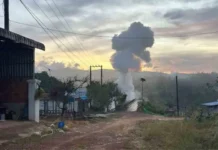Banks in Pakistan have long relied on the mortgage of immovable property as the cornerstone of secured lending; whether for consumer finance, SME funding, or corporate exposures, the go-to security remains property, often in the form of an equitable mortgage created through deposit of title documents. On paper, this provides strong protection to the lender. In reality, the picture is far more complicated.
Over the years, it has become increasingly clear that the legal framework surrounding mortgage and foreclosure in Pakistan does not offer the kind of predictability and efficiency required in a modern credit system. Courts, land administration, and procedural gaps have all contributed to turning what should be a straightforward legal right— the recovery of secured debt— into a prolonged, uncertain and often costly ordeal.
While lending against property is meant to reduce credit risk, in practice, it often introduces a different kind of risk: legal risk. Most banks conduct limited legal review after credit approval has already been granted. Title documents are often outdated, incomplete, or disputed. In some cases, entire ownership chains are either unverifiable or challenged by third parties due to ill-maintained record keeping by the state-owned department.
Provincial land record systems remain fragmented and, despite some progress in digitization in Punjab and Sindh, manual systems still dominate. Multiple entries, forged documents, and collusive tampering with land records are not just possibilities— they are common realities. In this environment, the value of property as a dependable form of security becomes deeply questionable.
Pakistan’s legal regime does provide for out-of-court foreclosure— at least in theory. However, in actual practice, foreclosure has become a largely academic concept. Borrowers, even in clear default, regularly obtain stay orders. Banking courts are overburdened, and civil litigation over property drags on for years, sometimes over a decade. Meanwhile, the value of the mortgaged asset depreciates or is compromised by illegal occupation, poor upkeep, or market downturns.
Despite legal provisions intended to give banks the right to enforce mortgage without court intervention, judicial reluctance and procedural loopholes have rendered such powers toothless. The intent of the law is bypassed through creative litigation strategies and generous interim relief. The result? Banks face delays, losses, and in some cases, total write-offs on assets that were supposed to be “fully secured.”
One of the most glaring gaps in Pakistan’s credit culture is the absence of structured legal risk assessment as part of the credit approval process. Legal due diligence is treated as a compliance item, not a risk factor. This approach has serious consequences.
As Pakistan moves toward financial inclusion and digital transformation, the strength of its secured lending framework must not be overlooked. Real progress lies not just in expanding credit, but in ensuring that the legal and institutional foundations supporting that credit are robust, transparent, and enforceable. In Pakistan, it’s not the borrower who defaults first, it’s the system. That’s the real foreclosure crisis.
A property with a weak title or unclear ownership should never be treated as adequate collateral— no matter how attractive the location or appraised value. But in many banks, collateral is judged on commercial parameters, while legal flags are ignored or deferred until documentation or disbursement stages. This disjointed approach is both risky and outdated.
Rethinking the Credit Approval System
There is an urgent need for banks in Pakistan to adopt a more integrated approach, one that recognizes legal enforceability as a core element of creditworthiness. This means involving legal teams at the pre-sanction stage, establishing legal risk matrices, and developing internal standards for acceptable security based not just on market value, but on legal soundness.
A few key steps can transform the process:
- Early Legal Involvement: Legal review should begin before the proposal reaches the credit committee, not after.
- Legal Risk Ratings: Develop an internal rating system for properties based on legal factors — title clarity, ownership chain, risk of litigation, and registration status.
- Centralized Legal Cell: A centralized unit within the bank’s Credit Administration should vet all security documents, manage charge registration, and monitor legal recovery cases.
- Engagement with Land Authorities: Direct liaison with provincial land authorities must be institutionalized to reduce fraud risk and expedite verifications.
A Wake-Up Call for the Sector
The disconnect between legal enforceability and credit policy has persisted for too long. It is time for a cultural shift. Just as banks assess financial ratios, business viability, and repayment capacity, they must assess the legal reliability of the proposed security.
The truth is simple but often overlooked: if the security can’t be enforced, it’s not security. And if the law doesn’t work in practice, it might as well not exist.
The financial system depends not only on monetary policy or capital adequacy, but on confidence in the enforceability of rights. That confidence, today, is at risk. Banks, regulators, and policymakers must act— not just to fix laws, but to change how risk is understood, measured, and managed in the real world.
Furthermore, the role of accountability cannot be overlooked. Banks must integrate legal risk as part of their credit assessment matrix, and regulators must ensure this integration is practiced, not just prescribed. Legal teams, credit approvers, and recovery officers should be jointly responsible for ensuring that enforceability is built into the transaction from day one.
Digitization of land records is equally critical. Despite some advancement, particularly in Punjab, land registries remain fragmented and susceptible to tampering. A secure, centralized, and verifiable digital record system— ideally linked with financial institutions— can significantly mitigate title fraud and improve mortgage reliability.
While legal reforms are necessary, the real need lies in enforceability and modernization. Out-of-court foreclosure exists in principle but fails in practice due to judicial delays and procedural loopholes. Specialized banking tribunals, time-bound decisions, and better case management systems are urgently required to make secured lending truly secure.
To address the challenges effectively, comprehensive land and legal reforms must be prioritized, starting with a centralized, digitized land registry directly linked to financial institutions to curb fraud and ensure swift verification. Strengthening land administration through technology, training, and oversight is equally critical. Embedding legal risk assessment into the early stages of credit approval will further enhance the integrity of secured lending.
As Pakistan moves toward financial inclusion and digital transformation, the strength of its secured lending framework must not be overlooked. Real progress lies not just in expanding credit, but in ensuring that the legal and institutional foundations supporting that credit are robust, transparent, and enforceable. In Pakistan, it’s not the borrower who defaults first, it’s the system. That’s the real foreclosure crisis.























